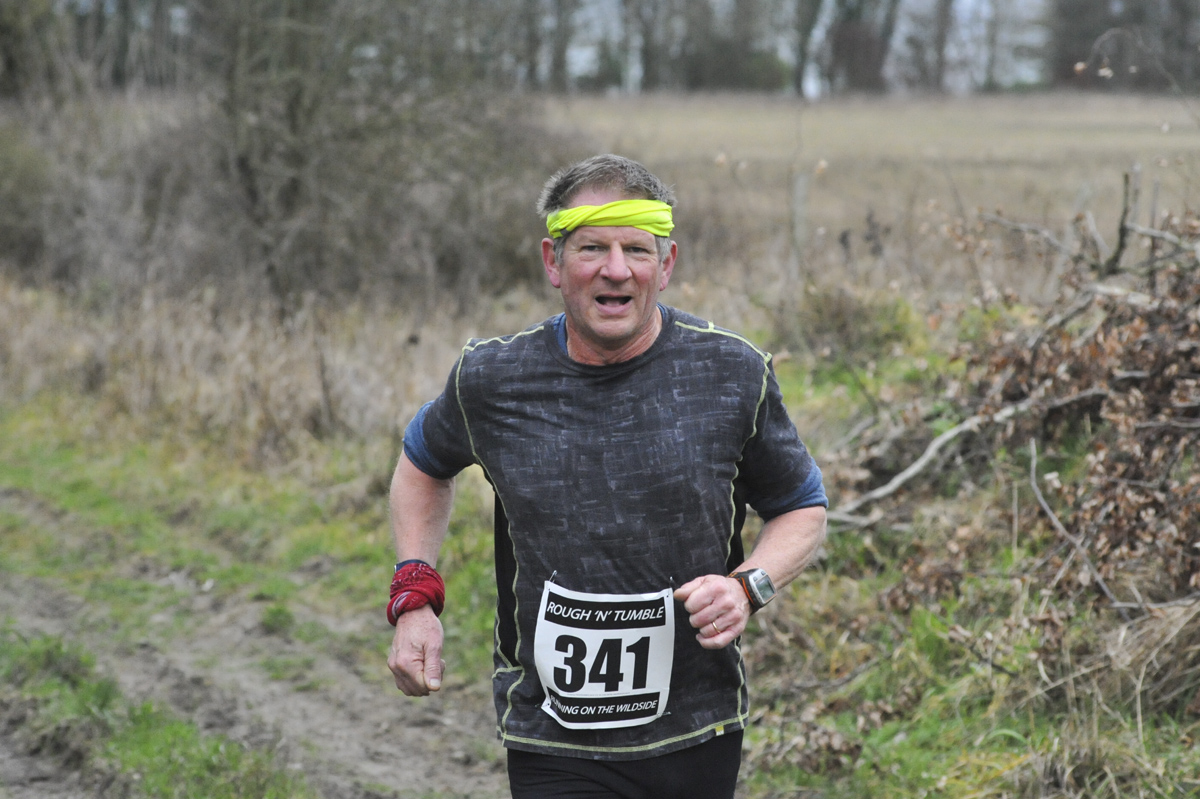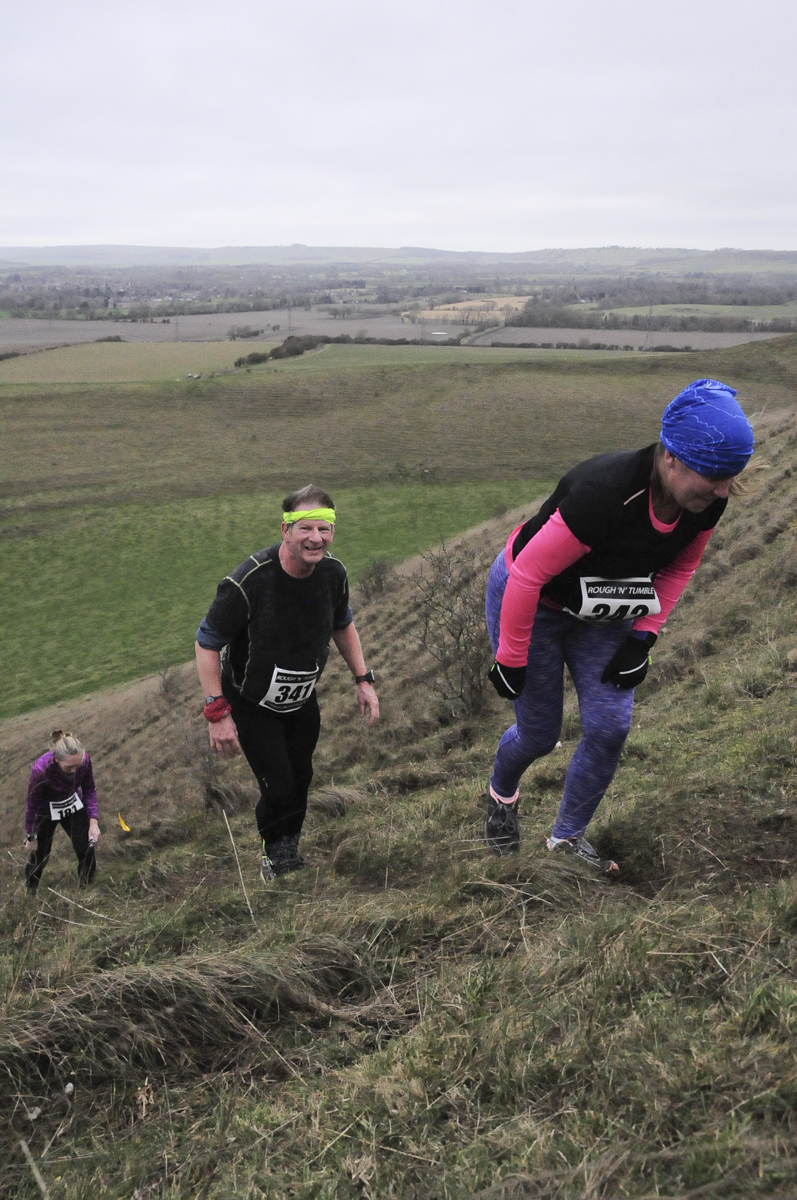The race director has a sense of humour and knows how to keep the attention of 600 runners none of whom want to listen to the statutory race briefing. It is warm for January but hanging around in shorts and t-shirts when all you want to do is start the race is no fun. The safety brief is delivered, the route described with how it will be marked and marshalled, we are informed it is ‘hug a marshall day’. In others words show appreciation for all those who have given up their time to help keep us safe and en route.
The starting siren goes and we are off, 600 runners bunched up on a narrow country lane. For the first kilometer I am swept along by the mass. It is a time to be careful, in the seething mass it is all too easy to trip with any resulting injury putting an end to my marathon training. Also it will be too easy to get carried away by group going too fast with the inevitable blow out later in the race. My training programme (Don Fink) stresses the need to controlled pace when running the marathon.
Soon the pace ceases to be an issue, the group starts to string out and as we emerge from a wood the scene ahead reveals a steep hill with a multi-coloured snake strung out along hillside. This is the first of 3 big hills on the 10 mile (16Km) route. I puff and pant up the hill, my natural urge to macho style keep running up the hill is easily suppressed as common sense kicks. I’m only 2 miles in.

More up and down dale. I’ve found my rhythm, feeling fairly good, the performance training with weights has paid dividends, I’m running in a more upright position. I drop off the second hill, steep slope careering past more cautious runners. A sharp turn onto a short but brutal hill, with mystifying sign proclaiming “This is not a hill”. On reaching the crest there is a sharp drop into a valley. That is not what captures the attention. Across the other side of the valley are what look like coloured ant crawling up the other side. No time to stop and wonder, on on. Into the valley and across to the other side. The Race Director’s sense of humour has followed us. The next sign shouts out “THIS IS A HILL”. The multi-coloured ants are runners climbing a 70m 10% slope almost on their hands and knees.

Off the hill, down dale again to the final hill, legs are starting to feel the gradient. In the past pride would have forced me to keep running up the hill, but the older wiser me starts to walk. Marathon is all about pacing. On, on to the finish line with my legs still going and able to hold off the guy behind me in the stumble to the finish line. 16km, over 300m of climb and a time of 1hr 51min, not sure what to make of it in terms of marathon performance but I’ve survived the longest run in over 18 months and I’m still walking in a straight line.